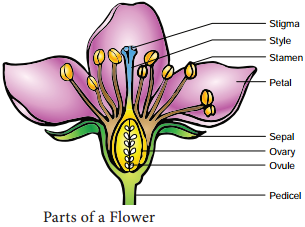Learninsta presents the core concepts of Biology with high-quality research papers and topical review articles.
Sexual Reproduction
In previous classes reproduction in lower plants like algae and bryophytes was discussed in detail. Sexual reproduction involves the production and fusion of male and female gametes. The former is called gametogenesis and the latter is the process of fertilization. Let us recall the sexual reproduction in algae and bryophytes.
They reproduce by the production of gametes which may be motile or non motile depending upon the species. The gametic fusion is of three types (Isogamy, Anisogamy and Oogamy). In algae external fertilization takes place whereas in higher plants internal fertilization occurs.
Flower
A flower is viewed in multidimensional perspectives from time immemorial. It is an inspirational tool for the poets. It is a decorative material for all the celebrations. In Tamil literature the fie lands are denoted by different flowers. The flags of some countries are embedded with flowers. Flowers are used in the preparation of perfumes.
For a Morphologist, a flower is a highly condensed shoot meant for reproduction. As you have already learned about the parts of a flower in Unit II of Class XI, let us recall the parts of a flower. A Flower possesses four whorls – Calyx, Corolla, Androecium and Gynoecium.
Androecium and Gynoecium are essential organs (Figure 1.3). The process or changes involved in sexual reproduction of higher plants include three stages. They are Prefertilization, Fertilization and Post fertilization changes. Let us discuss these events in detail.
